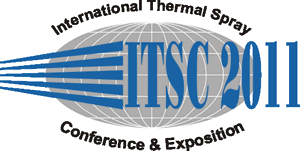
|
3037 |
|
Wednesday, September 28, 2011, Saal C2.1 12:15 PM Automotive Industry 1 |
|
Friction improvement of new engine generations by PTWA cylinder bore coating and new piston rings |
|
Alexander Schwenk / GTV Verschleiss-Schutz GmbH, Germany Leander Schramm* / Ford Forschungszentrum Aachen GmbH, Germany Clemens Verpoort/ Ford Forschungszentrum Aachen GmbH, Germany Kirsten Bobzin/ IOT University Aachen, Germany Koray Yilmaz/ IOT University Aachen, Germany Nazlim Bagcivan/ IOT University Aachen, Germany Thomas Schläfer/ IOT University Aachen, Germany Sebastian Theiß/ IOT University Aachen, Germany |
|
The automotive industry needs to fulfil increased requirements and strict regulations in order to reduce CO2 emissions. Close to 50% of the friction losses result from the triblogical system consisting of the cylinder bore wall and the piston ring. Increased efficiency in the power train system due to newly designed surfaces can help to reduce CO2 emissions by lowering friction. Such improvements are possible by new coating systems. Some examples for such new coating systems in the power train are the piston group, the piston pins, the piston rings as well as coated gears and injector nozzles. One of those new applications is the PTWA spray bore coating process of new AlSi engine generations in order to reduce the friction losses in the above mentioned tribological system cylinder wall and piston ring. A PTWA spray coating contains a certain amount of porosity. The pores at the surfaces will be opened during the honing operation. The opened pores are additional oil retentions beside the honing structure which can help to reduce friction especially in between the top and bottom dead centre. For the boundary and mixed friction which occurs in the area of bottom and top dead centre the material properties are important for the resulting friction value. Within the frame of this work different wire feedstock materials such as low alloyed C-steel and FeCrAl are PTWA sprayed onto cylinder bore surfaces and honed subsequently. Onto the second friction partner DLC and CrAlN coatings are applied by PVD processes. The different coatings systems are analysed with regard to hardness, porosity and microstructure. The tribological systems, the combinations of thermally sprayed cylinder running surfaces and PVD coated piston rings, are analysed with regard to their friction behaviour (coefficient of friction) by linear reciprocating tribometer testing. The results are being compared to those obtained for standard combinations (grey cast iron cylinder running surface vs. nitrided piston ring). Friction aspects of different PTWA coatings as well as different piston rings compared to industrial used cylinder liners and piston ring are discussed. |